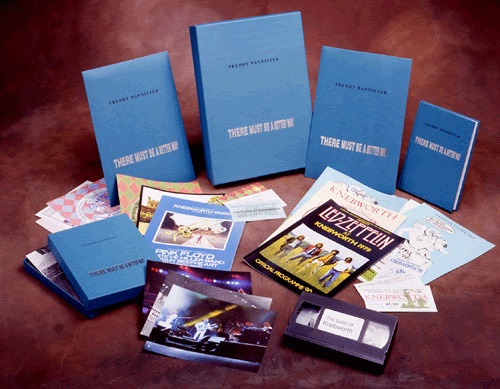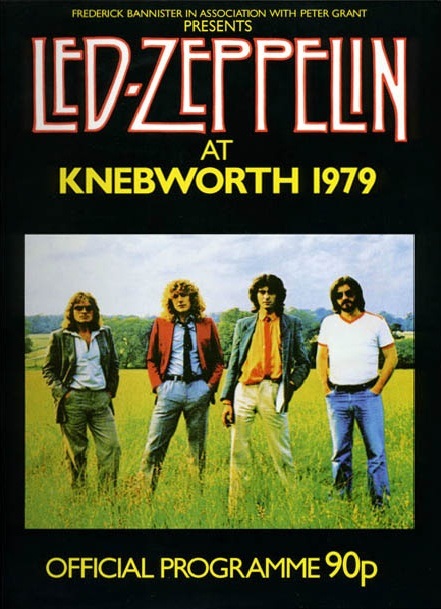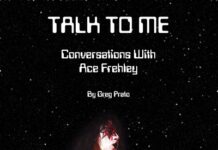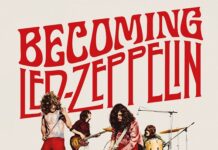By Shawn Perry
Woodstock and Live Aid may have captured the world’s attention as the most important rock festivals in history, but tucked away on the grounds of a beautiful, historical estate and park 29 miles north of London, England is a site where some truly magnificent and spectacular concerts have been staged. The Rolling Stones, Led Zeppelin, Pink Floyd, Genesis, Frank Zappa, the Allman Brothers Band and Lynyrd Skynyrd are among the many groups who played the remote, yet vast English estate known as Knebworth back in the 70s. The man behind these one-of-a-kind shows was a well-established promoter by the name of Freddy Bannister.
Freddy got his start through his father-in-law, and went on to spend the better part of the 60s promoting shows at the Pavilion in Bath. From 1963 through 1969, everyone who was anyone played the Pavilion: Gene Vincent, the Beatles, the Rolling Stones, the Who, the Yardbirds, Cream, Jimi Hendrix, Pink Floyd and literally hundreds of others making a name for themselves during the mad stampede of the British Beat bands of the 1960s. It was an exciting time for pop music, which was exploding all over England and spreading to the rest of the world. Bannister eventually outgrew the Pavilion, and started putting on bigger festivals in and around Bath, as well as promoting entire tours around the U.K. Politics chased Bannister out of Bath, and in 1973, he stumbled upon Knebworth, a stately manor in Hertfordshire, renowned as the home of Victorian novelist Edward Bulwer Lytton, who coined the phrase, “the pen is mightier than the sword.”
From 1974 through 1979, Bannister staged seven incredible festivals at Knebworth. The first show, known as Bucolic Frolic, was held on July 20, 1974. The eclectic line-up included Tim Buckley, the Sensational Alex Harvey Band, Mahavishnu Orchestra, Van Morrison, the Doobie Brothers and the Allman Brothers Band. Bannister had originally attempted to snag Led Zeppelin, at that time the biggest band on the planet, to play the initial Knebworth show, but negotiations broke down. Reading Freddy Bannister’s book, There Must Be A Better Way, one gets the sense that the promoter was on a never-ending quest to bring Zeppelin to Knebworth. But that wouldn’t happen for some time. Nevertheless, Knebworth’s first show drew 40,000 — a respectable number — and cultivated the desire, despite the financial losses, to return to the site the following year.
Freddy has a simple philosophy as to why subsequent Knebworth Festivals, while often logistical nightmares and fiscally disastrous, were remarkable in their creativity and execution. “I think I always tried to book the strongest program possible,” he notes, “whilst keeping the admission price as low as was practical.” Looking back, who could argue with the £2.75 admission to see Pink Floyd, Steve Miller, Captain Beefheart and the Magic Band and Roy Harper on the 5th of July in 1975 at Knebworth. Bannister and his team encountered the usual obstacles — dealing with the local councils about licensing, various technical issues, scheduling and rising costs on everything from labor to equipment — but the attendance doubled the previous year and things, in general, went fairly smooth. Much of that had to do with Pink Floyd’s manager, Steve O’Rourke. Bannister writes, “Steve O’Rourke turned out to be amongst the very best managers I ever worked with…I only wish all the Knebworth Festivals could have been as much fun to promote.”
Unfortunately, Bannister didn’t have the same, pleasant experience in 1976 when he, once again, angled for Led Zeppelin, then considered Queen, and finally settled on the Rolling Stones as headliners at what became The Knebworth Fair. Although Bannister did his best to accommodate the greatest rock and roll band in the world for their show on August 21, the Stones gave a long, uneventful performance (second billed Lynyrd Skynyrd, on the other hand, were riveting, especially during the climatic rush of “Freebird”). Adding insult to injury, a dispute regarding attendance figures between Peter Rudge, the group’s acting manager, and Bannister left a nasty stain on the aftermath.
Partly flustered by the Stones’ debacle, yet in hot pursuit of comparable headliners for another festival, Bannister ended up skipping Knebworth in 1977. In 1978, he returned with two smaller, relatively trouble-free shows. The first one, called A Midsummer Night’s Dream, took place on June 24 and featured Genesis, along with Jefferson Starship (without Grace Slick, who had suffered a breakdown in Germany), Tom Petty and the Heartbreakers, Devo, Brand X, Atlanta Rhythm Section and Roy Harper. It ended up drawing 80,000 people. The second show was much smaller, yet more diverse in its billing with Frank Zappa (a personal favorite of Bannister’s), the Tubes, Peter Gabriel, the Boomtown Rats and Rockpile.
Having established a precedent with consistently well-produced festivals, Bannister again turned his attention to Led Zeppelin in 1979. The promoter had a relationship with the group’s colorful, intimidating manager Peter Grant that dated back to Bath. It was simply a matter of coordination. Bannister, however, writes in his book that Grant was becoming more unreasonable and egotistical in his dealings with promoters. The beefy manager and his cronies had already butted heads with Bill Graham in Oakland when talk of bringing Zeppelin to Knebworth started up. Ever the hot potato, the band was especially attractive due to an extended absence from the British stage. They were also releasing their first new record in three years, In Through The Outdoor, their final studio album. Grant was so confident in the group’s comeback that he convinced Bannister to stage two Zeppelin performances over the course of two consecutive weekends in August 1979. This is where things got downright weird between Grant and Bannister. Disagreements on final attendance figures and money led to a bitter fallout between the two. Zeppelin’s stand at Knebworth were the last shows Bannister promoted.

These days, it seems as if every festival and classic rock concert ever recorded is being dusted off and released on CD and DVD. Knebworth hasn’t received that kind of attention on a broad scale. Zeppelin released a portion of their Knebworth performance on their celebrated DVD, and some of Lynyrd Skynyrd’s appearance has also found its way to the market. But it’s Freddy’s resourceful daughter Henrietta who has taken the initiative by releasing a limited edition Knebworth commemorative set, signed and numbered by the promoter himself. “Whilst at university, I realized that there was still a great deal of interest in the music my father had promoted, even with the 18- to 20-year olds,” Henrietta says. “Nothing like this was available.”
The extensive book set is loaded with reproductions of programs, fliers and tickets, as well as photographs, 12 CDs with full sets from many of the headliners, two DVDs featuring footage from the festival, and Bannister’s book, There Must Be A Better Way. In addition, there are commemorative sets dedicated to each individual Knebworth Festival and Bannister’s earlier years in Bath, along with a nice selection of T-shirts, posters, and assorted memorabilia. With continued interest in many of the performers who appeared at Knebworth, fans seeking out rare music memorabilia can find some truly unique items at the Rock Music Memorabilia web site.
Freddy himself is astonished at the continued popularity of bands like the Rolling Stones, Pink Floyd, Led Zeppelin and others that played Knebworth. “If you had asked me in the late 70s if these bands would be as popular 30 years on, I certainly would have said, ‘No’,” he remarks. “But I don’t think anyone realized at that time that was as good as it gets.”
And one has to wonder in these days when the Stones are endlessly touring, and Pink Floyd and Led Zeppelin have regrouped in one form or another, if Bannister himself ever thinks about returning to the frontlines of rock promotion. “Funny you should ask…” he says without another word. Good old Freddy Bannister — bringing the mystique and ambiguous wonder back to rock and roll.




















